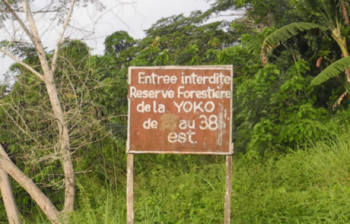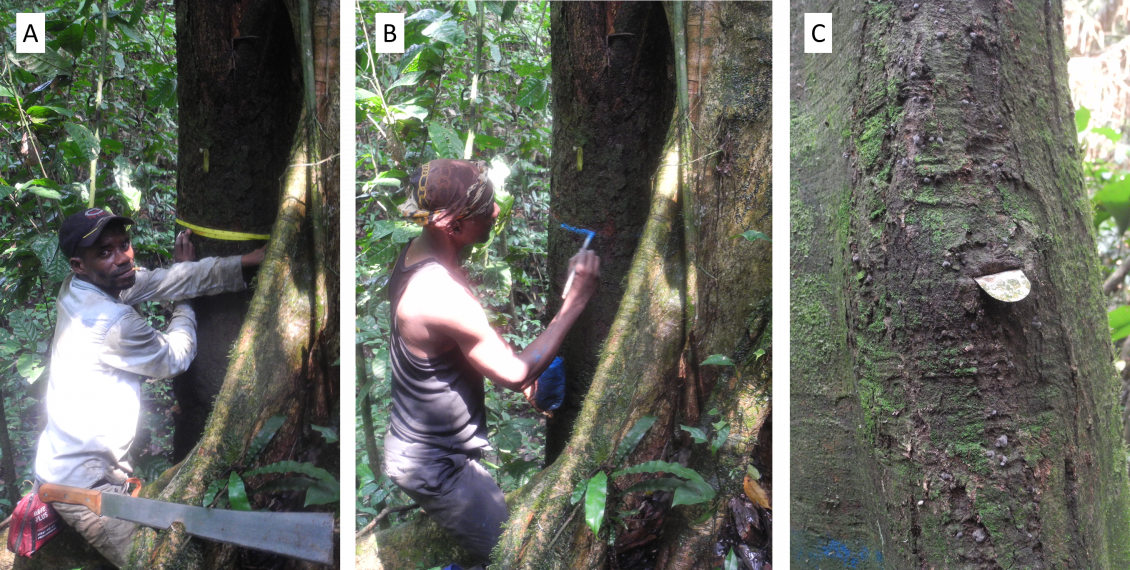The Yoko reserve forest. Snapshots of the scientific and human richness of a forest from the Tshopo province, Democratic Republic of the Congo [February - March 2020]

02/03/2020 - 18/03/2020, Yoko, DRC

B. Point of measurement painted by a technician (Alpha);
C. Example of an aluminum tag that has been absorbed by a tree and need to be replaced.
In order to gather a significant amount of data, the inventory work carried out in the Yangambi Man and Biosphere reserves was completed with measurements made on permanent plots from the Yoko reserve forest. In total, 25 ha were covered during the campaign. The reserve is located in the Tshopo province of the Democratic Republic of the Congo, roughly 30 kilometers south of the city of Kisangani. It is a privileged location for researches on the flora and fauna of the Congo Basin.
The methods used and the data gathered are of the exact same nature as in Yangambi. More information can be read on that subject in the previous blog article. The present article is written with the intent of focusing more on the “fieldwork reality”, providing an insight on the logistics of this campaign and the organization of the work.
The logistical preparation of the mission was the result of a partnership involving a searcher from the Royal Museum for Central Africa (Tervuren, Belgium) as well as a PhD student from the University of Kisangani and the local team of the CIFOR’s FORETS project. Their knowledge of the good practices for such a mission proved to be a priceless asset allowing for the smooth running of the mission.
Based on the objective of inventorying 14 ha of rainforest in Yoko, a minimum working time of 14 days was estimated for the campaign with the help of 10 trained local technicians and two fieldleaders. A cook was also hired in order to prepare meals for the whole teams twice a day during the entirety of the work. All the food and material were acquired ahead of time and had to be transported to Yoko on dirt bikes skillfully driven by local “bush-taxi”.
On site, each workday consisted of the same routine. A meal of fish and “foufou”, a manioc based preparation, was shared before entering the forest. The hike time from the village to the plots ranged from thirty minutes to an hour and a half at a good pace. The plots were indeed located a decent distance from the main roads in order to avoid human disturbances within them. At night, another welcome meal of “loso na madesu” (rice with beans) closed the day until the next morning.
A decisive factor for the success of a data gathering campaign is the logistics. And no data could be gathered at all without the work of the technicians. Many thanks go to the people involved in this mission, in Yoko as well as Yangambi and Kisangani, for their priceless help.
Félix Laurent, 13/05/2020
